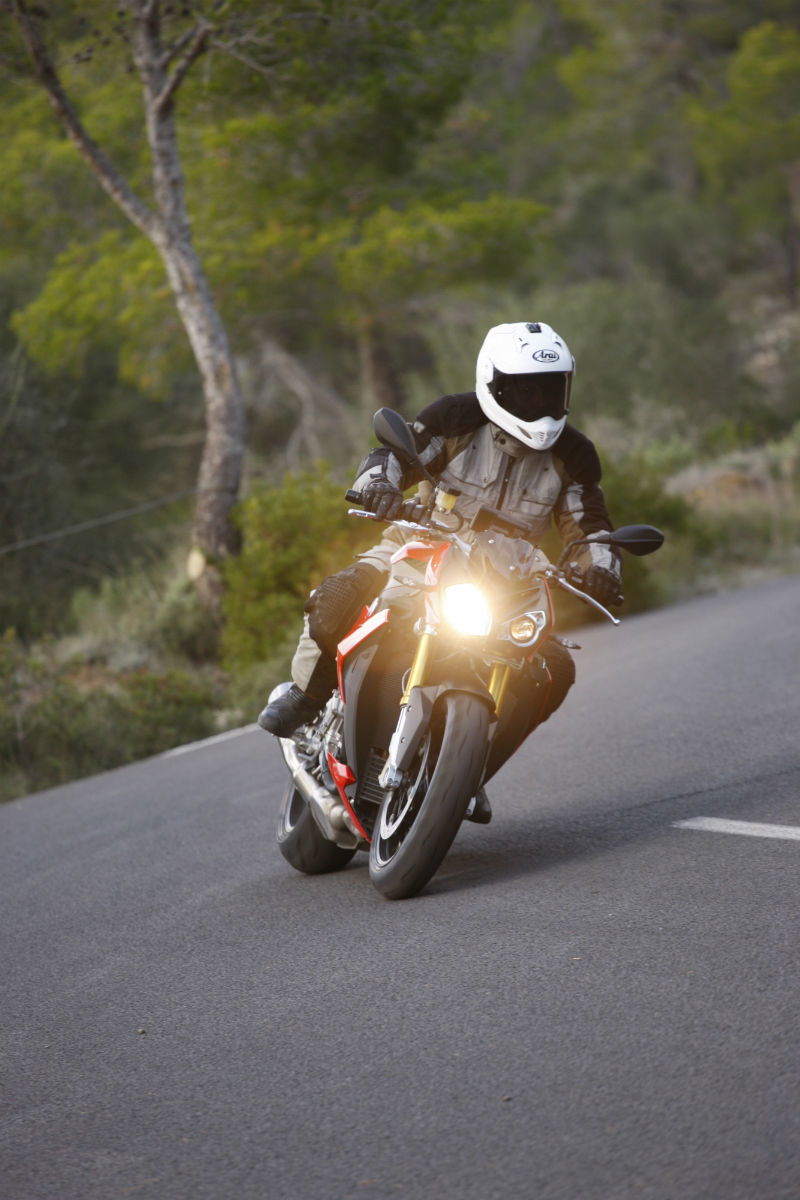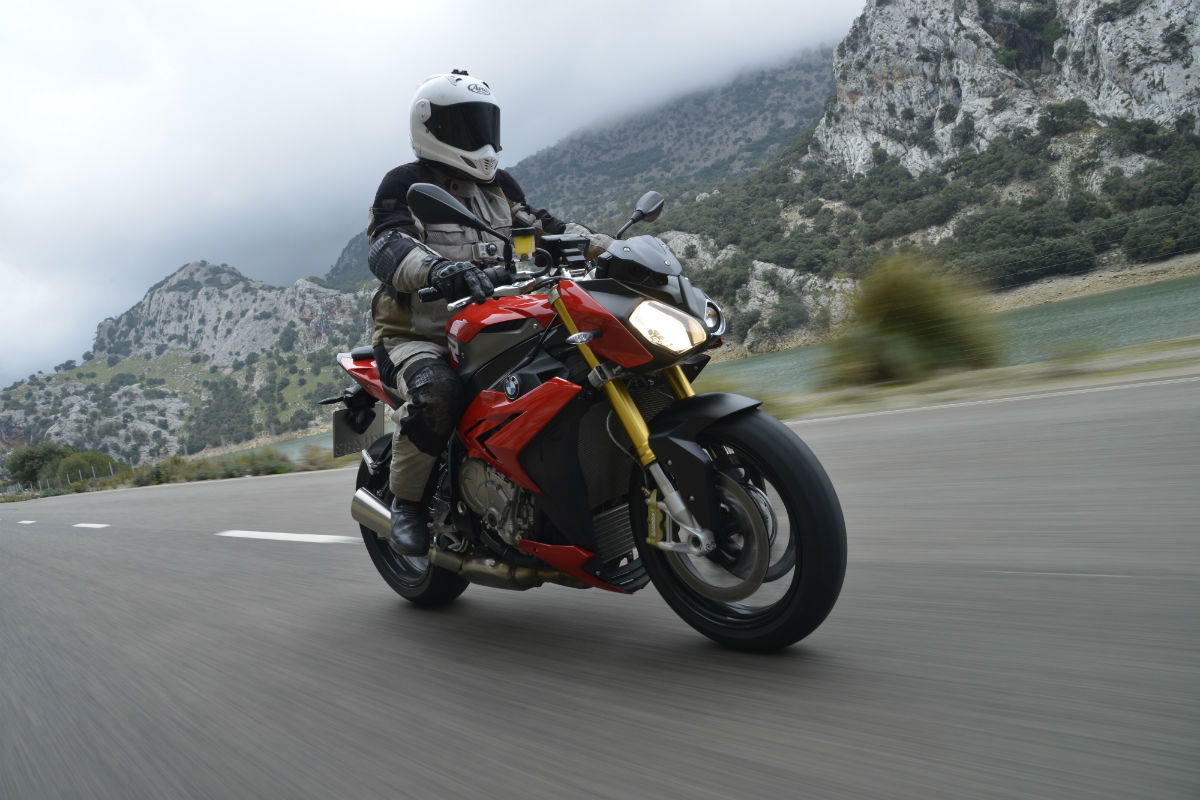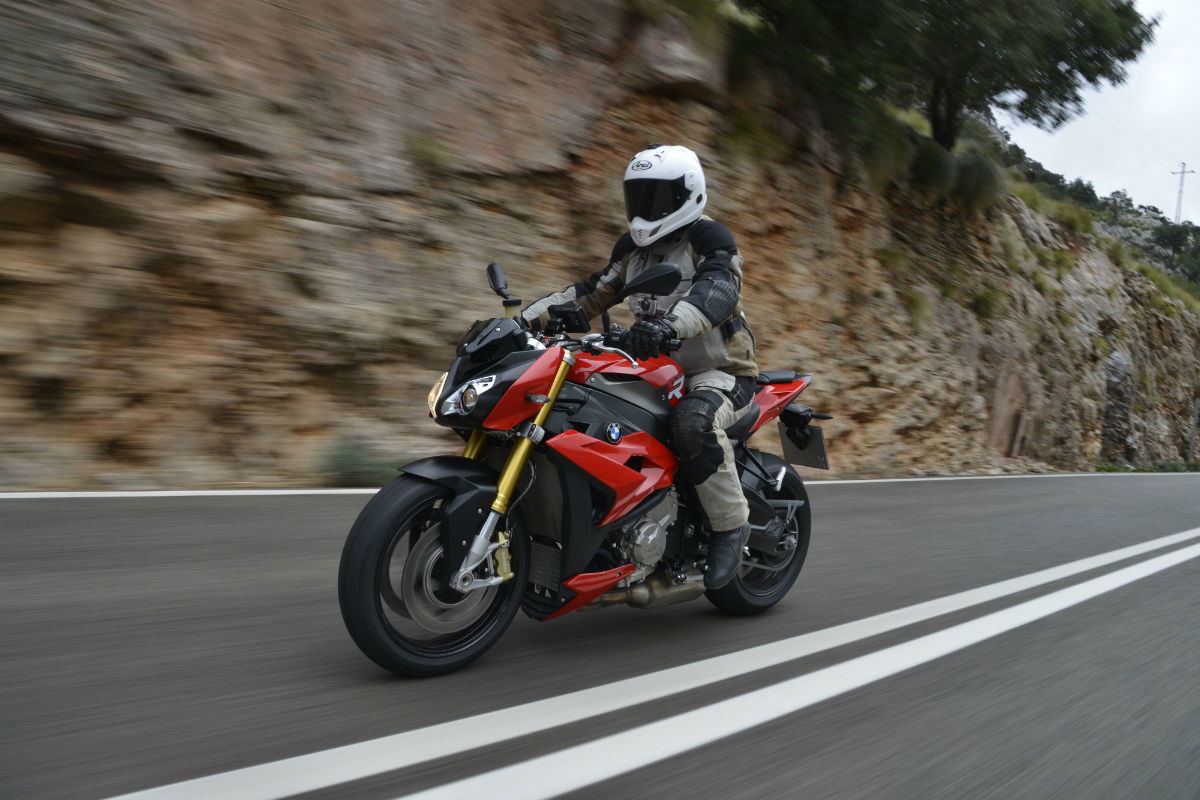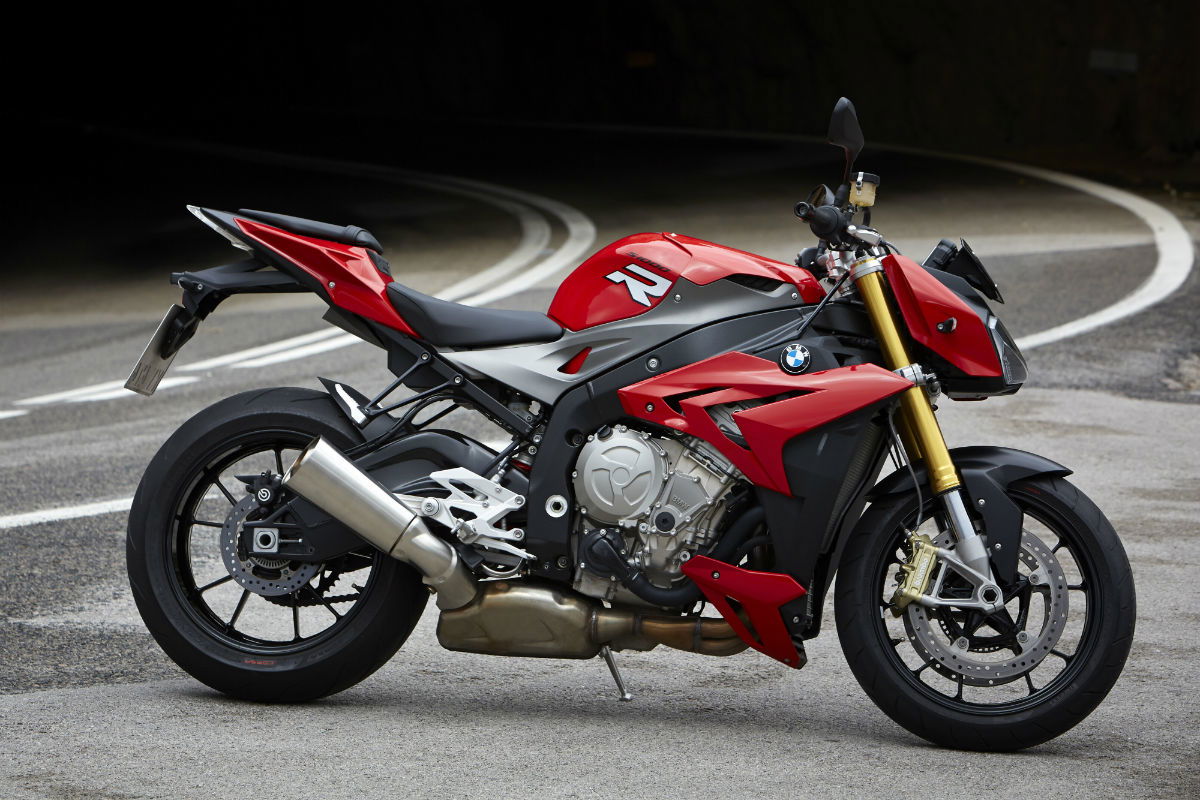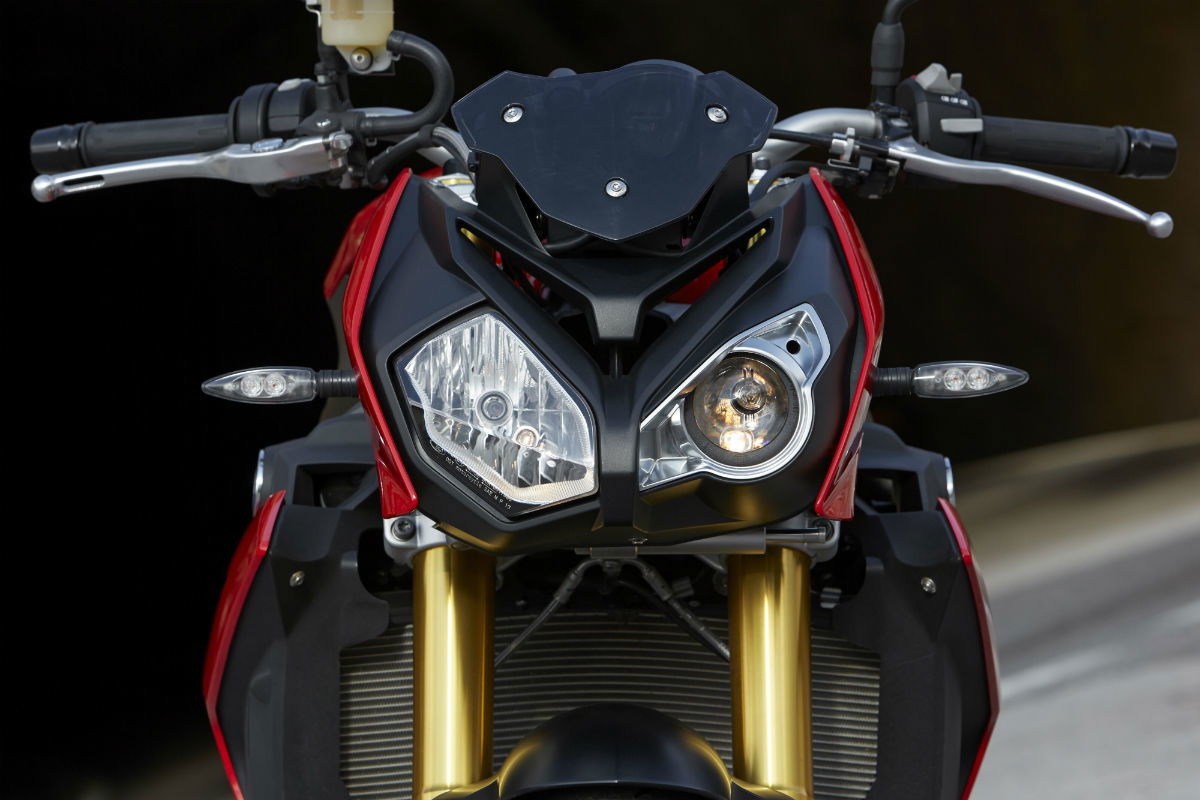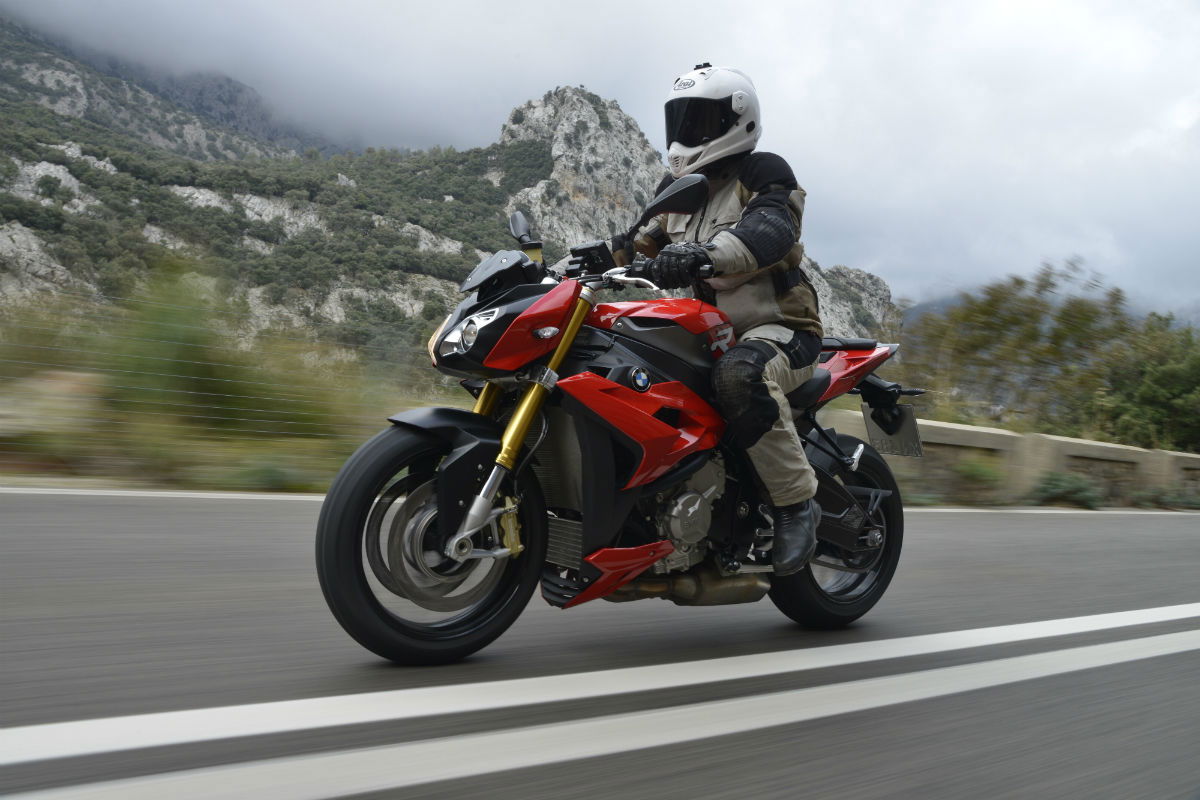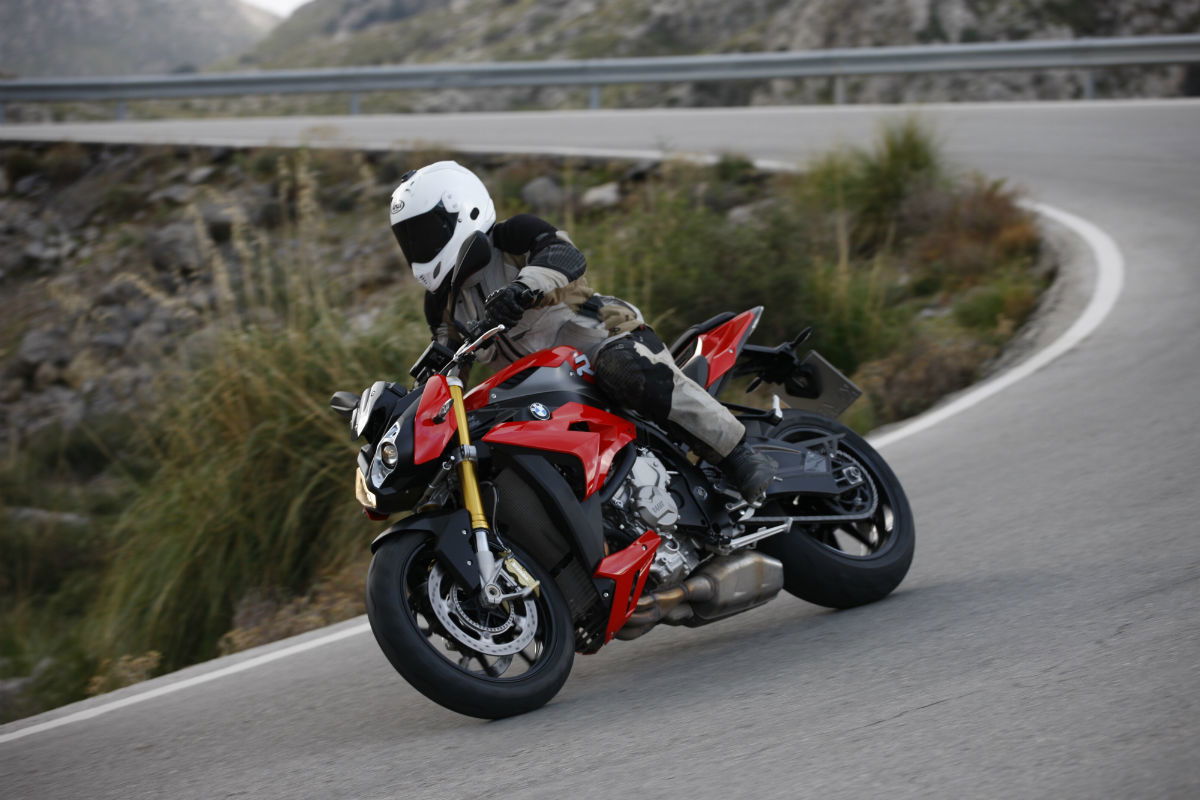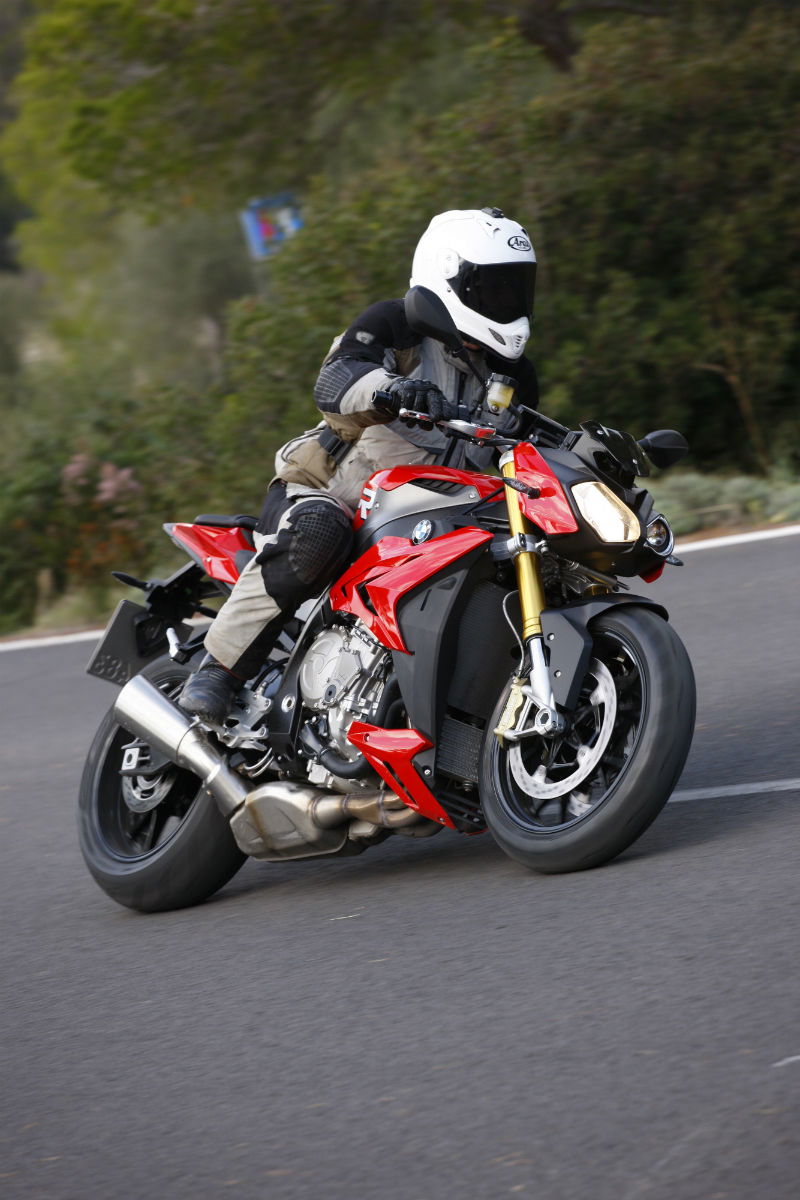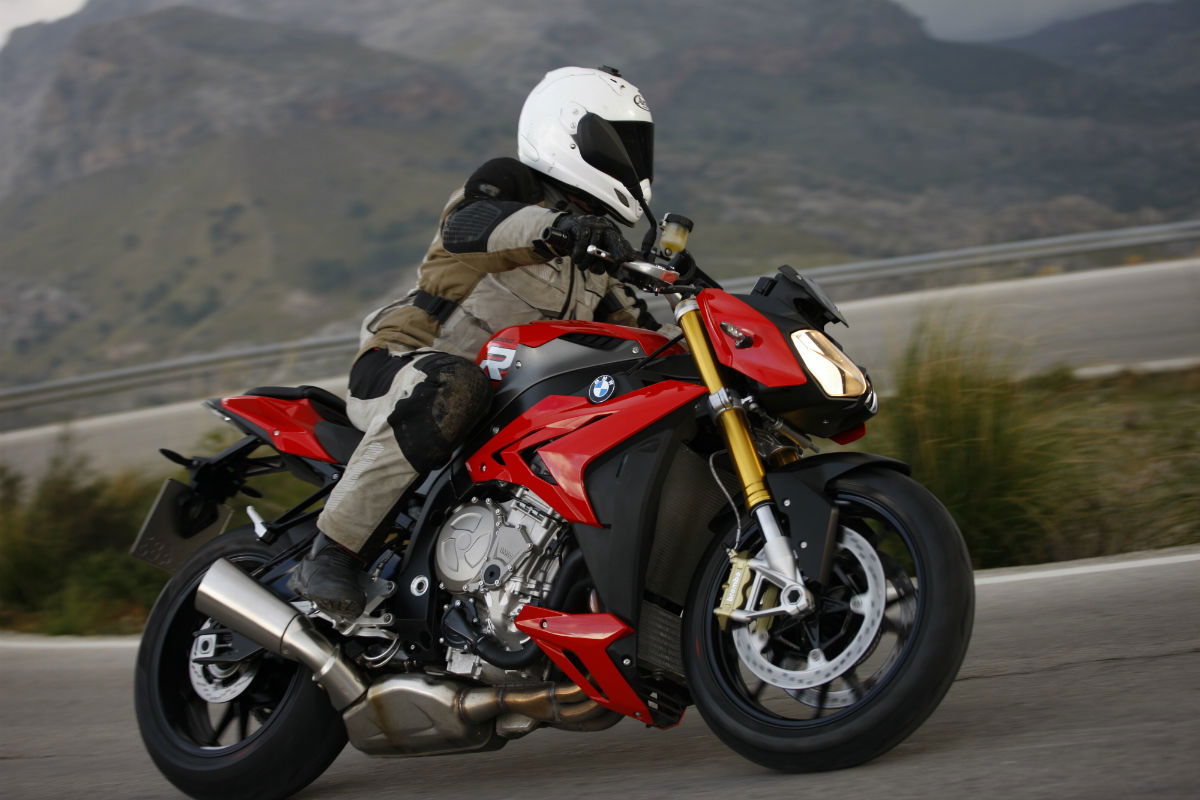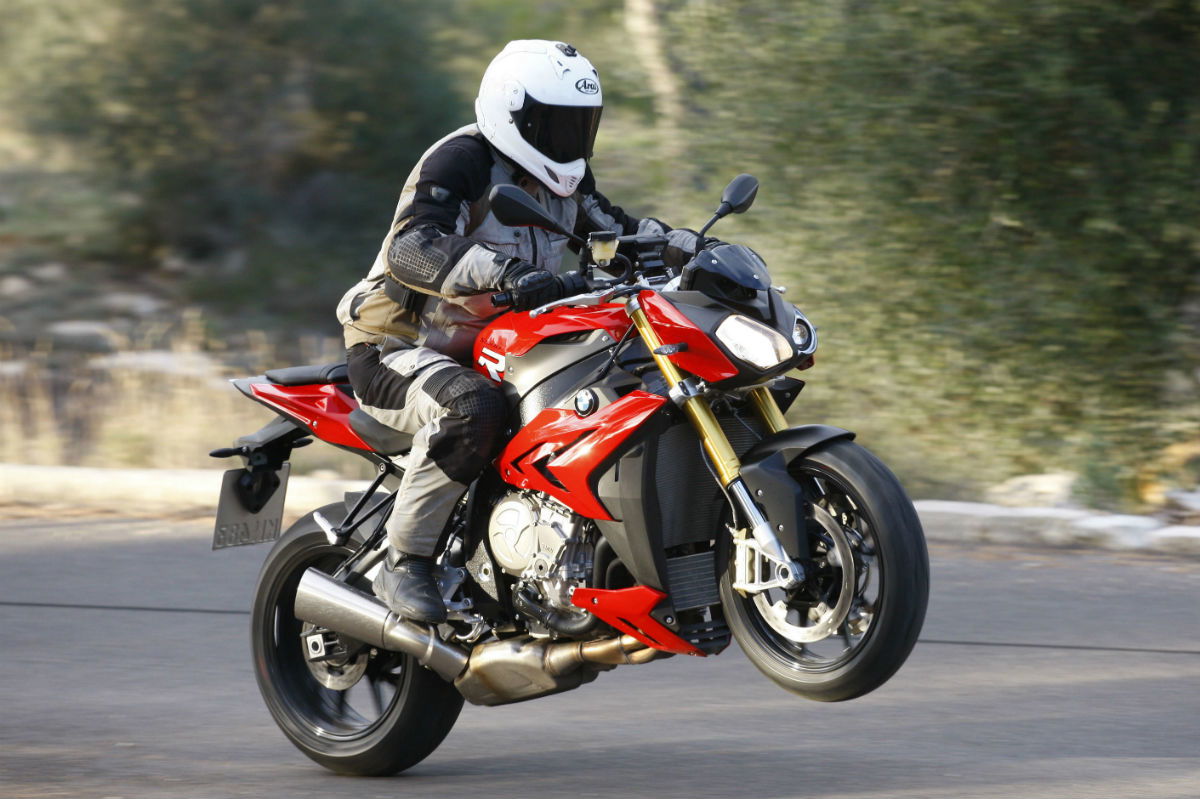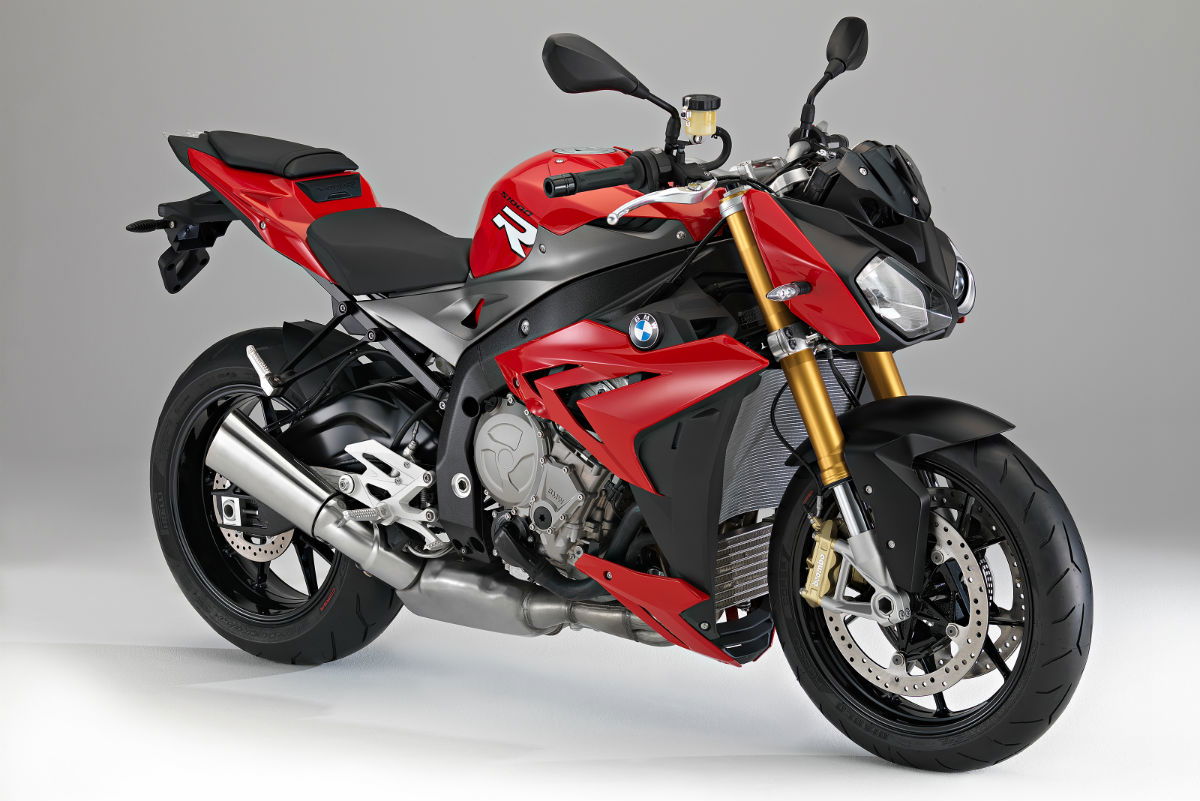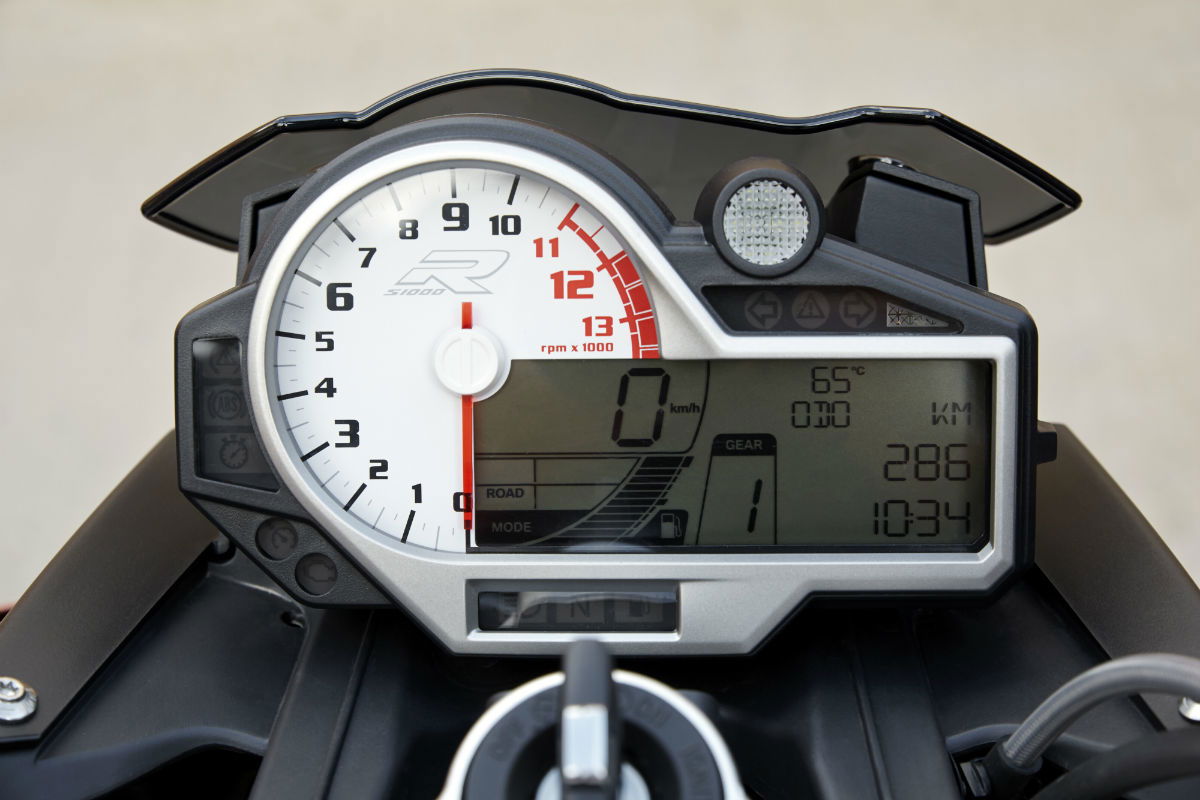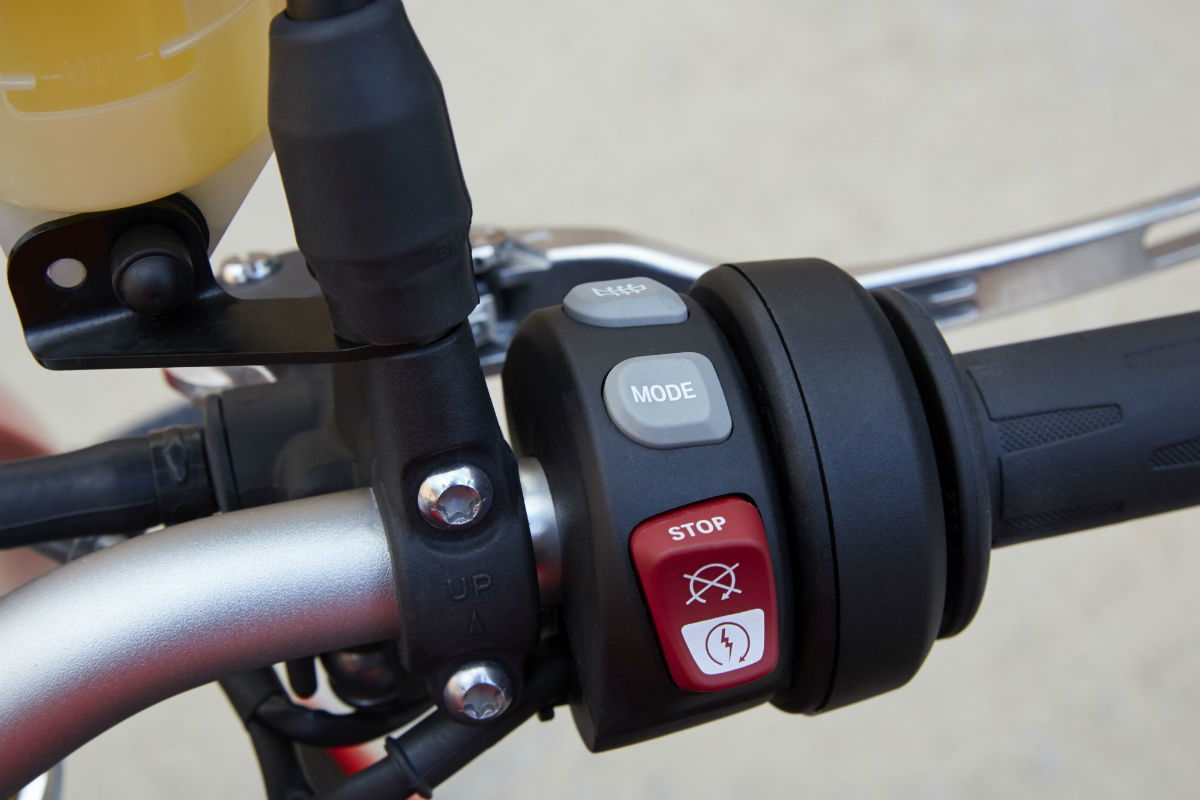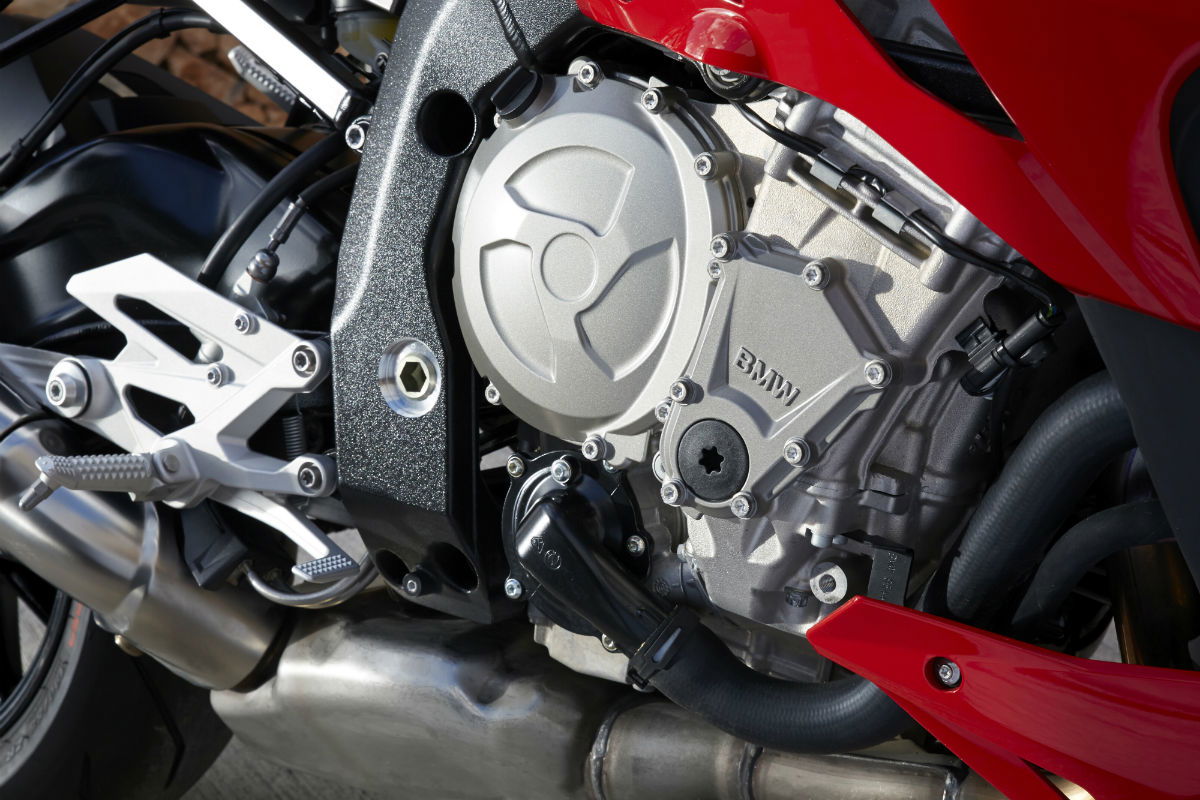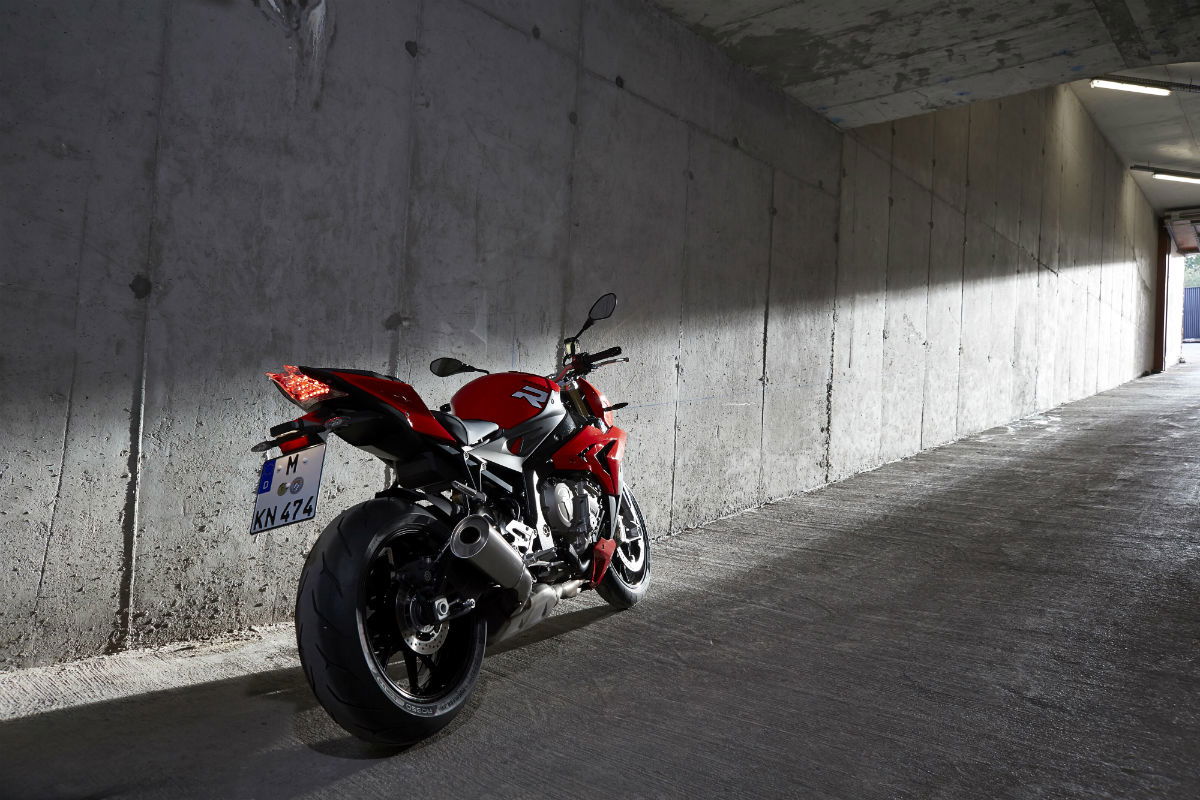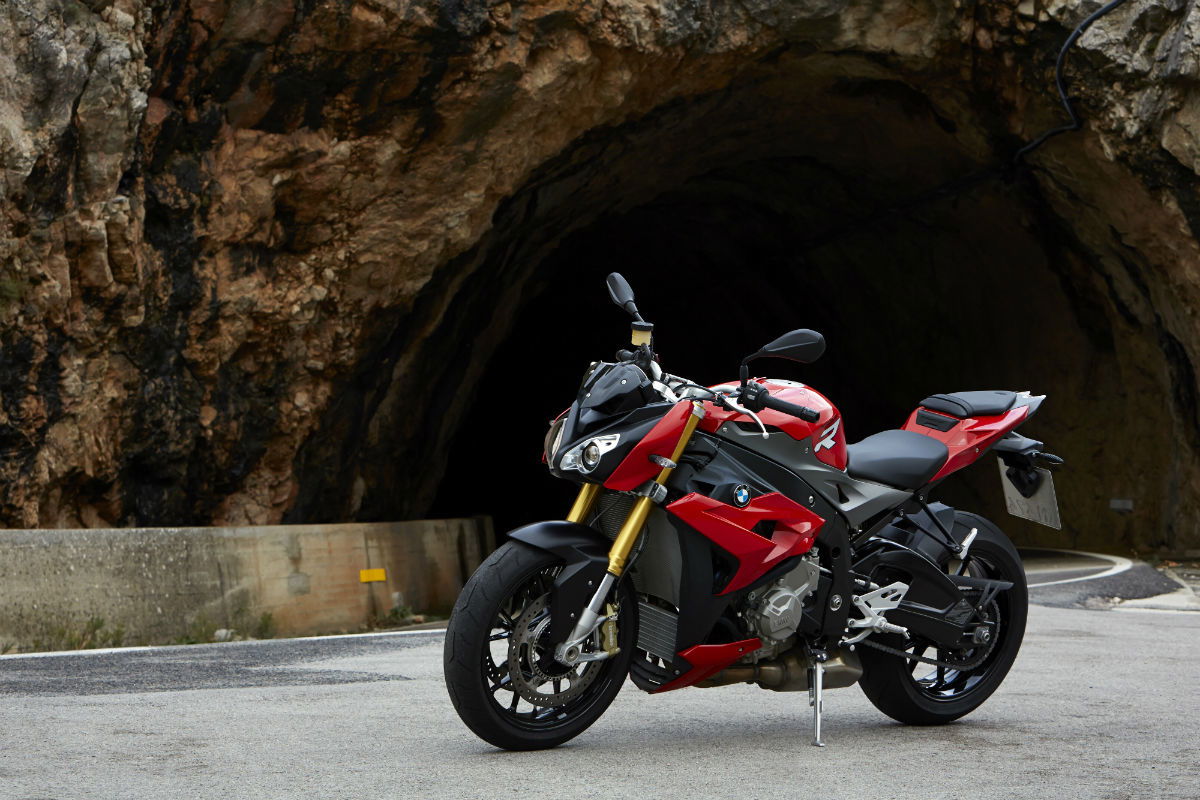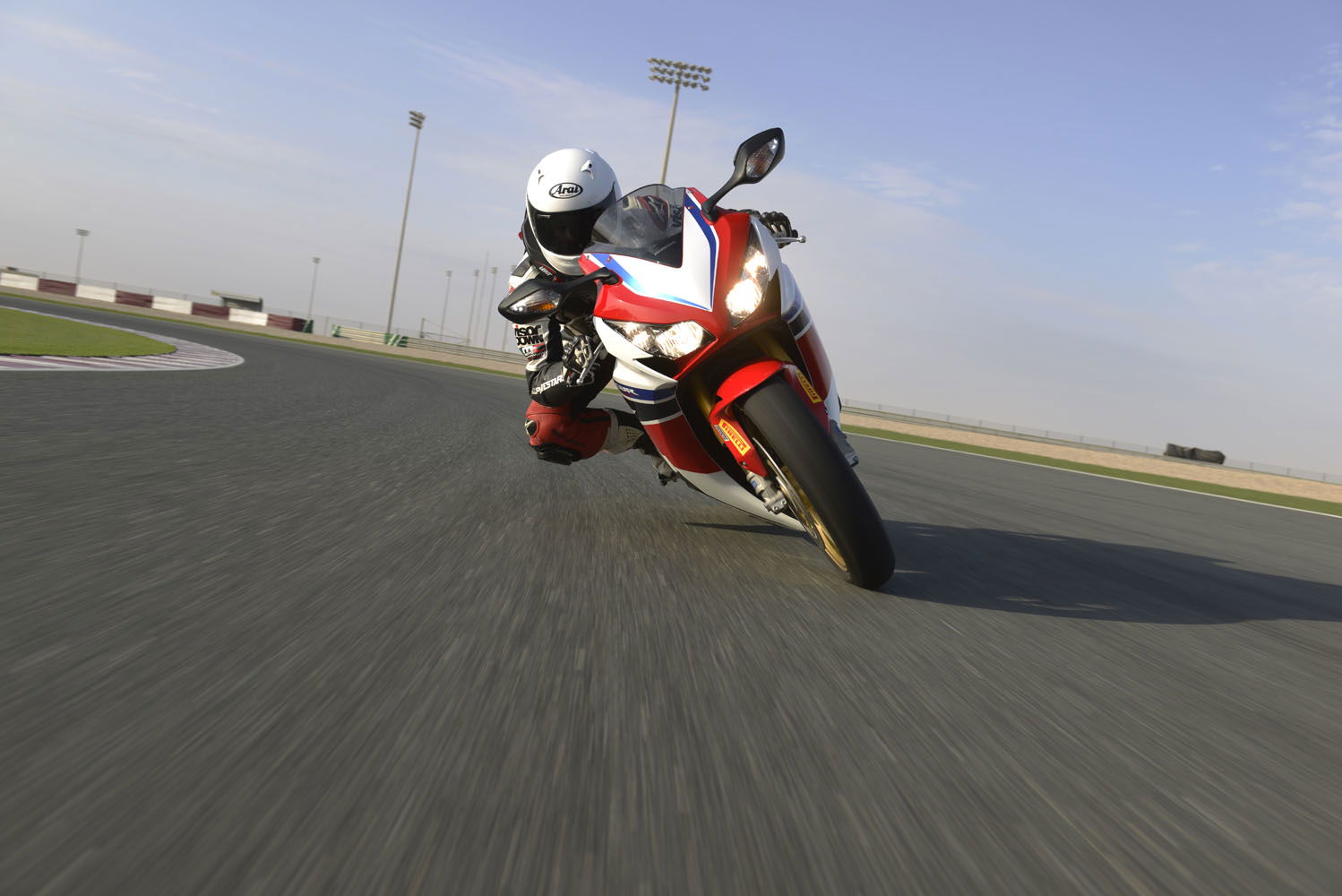First ride: BMW S1000R review
Extreme performance just got cheaper

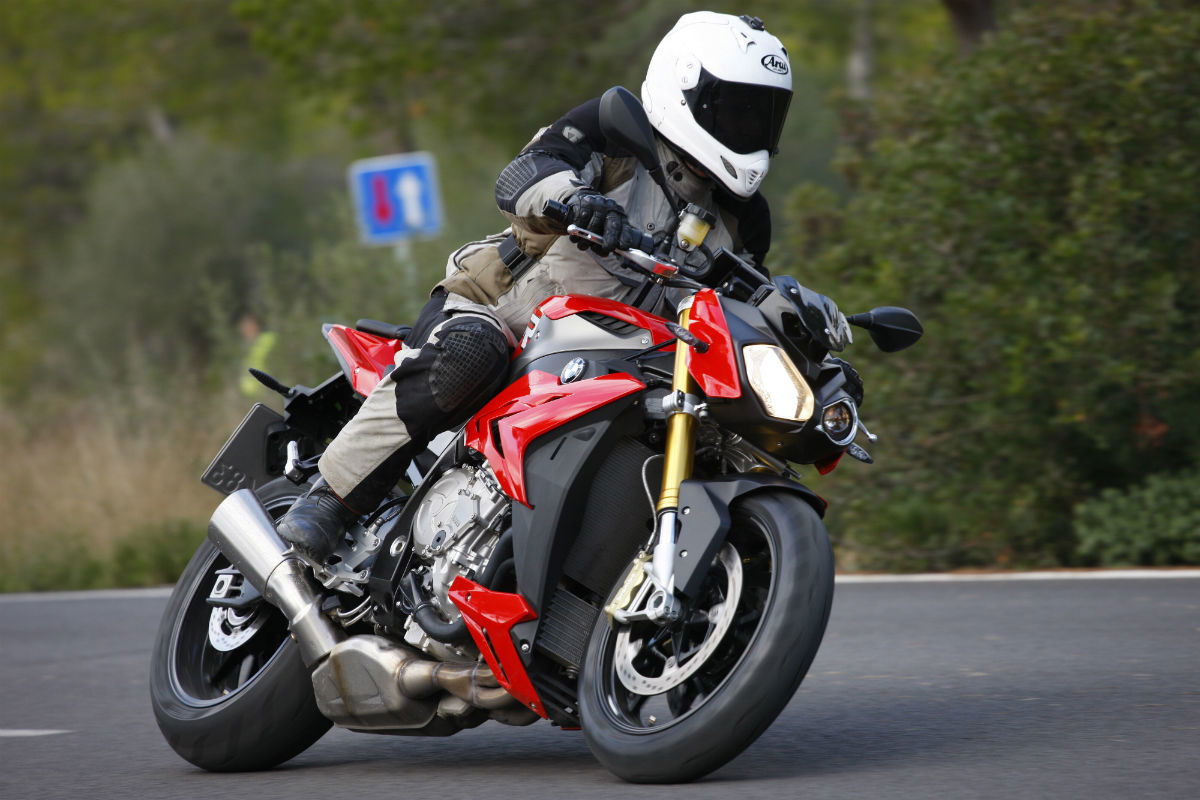
BMW’S S1000R was one of the worst kept new bike secrets of the year. Everyone knew the firm was working on a stripped-down version of its class-leading superbike, the S1000RR. Everyone was intrigued at the prospect of a 193hp engine in a naked bike.
It threatened to feel like an anti-climax when we learned the new S1000R made 160hp. It’s still a colossal amount of power, but 20hp less than KTM’s new 1290 Super Duke R, a direct rival. Why would BMW do that when they’d started with more?
That’s how I felt anyway. What I didn’t know then was that the S1000R makes more torque than the S1000RR almost across the rev range.
Peak torque is the same - 86.2lbft - but from 3,000 to 8,000rpm the S1000R makes about 7lbft more. So that’s more drive virtually everywhere. And the S1000RR is not exactly gutless.
Its new naked sibling is monstrous. A squirt of throttle in almost any gear, at any speed, will propel you into the future. In an eye-blink the unrestrained wind is trying to rip your head off.
It shares the S1000RR’s 999cc in-line-four engine and aluminium frame (complete with the bumpy textured finish). Geometry has been altered but it still handles like a sports bike, with precise steering and a decent feel of weight over the front end, giving a planted feel in corners. It's light on the move, easily thrown on its side. There's a superbike roar from the four-into-one exhaust and a satisfying burble when you shut off. It's also got a sports bike's limited steering lock.
The brakes are powerful - so powerful that some mental recalibration may be required. One finger on the lever brings you to a rapid halt.
The head angle is 0.8° less than the S1000RR’s. The straight bars are higher but there’s some forward lean in the riding position. It’s not bolt-upright. The wheelbase is 22mm longer for traction under acceleration. The footrests are 23mm lower for comfort and the pillion seat has been moved forward by 37mm. It’s comfortable but feels more like a sports bike than a naked. Like a comfortable, blisteringly fast sports bike with straight bars and no fairing.
So is that all it is? Apparently not. According to BMW’s Product Manager, Joseph Mächler, the firm first tried simply taking the fairing off an S1000RR and giving it straight bars, but testers were perpetually on one wheel. Three years later, the S1000R has undergone quite a lot more development. However, it will still go everywhere on one wheel if you want it to.
You get two or four riding modes depending on which variant of the S1000R you choose. The base model, at £9,990, comes with traction control, ABS and two riding modes, Rain and Road. In Rain mode the throttle response is softened, traction control and ABS intervene sooner and peak power is cut to 136hp. Road is slower to intervene but only allows small wheelies before cutting power. It also automatically eases off the front brake to prevent stoppies. To do a proper wheelie you have to switch the traction control off or buy the more expensive Sport edition, which is what journalists were given on the press launch in Majorca. It costs £11,390 and gives you two extra modes, Dynamic and Dynamic Pro.
A complaint about KTM’s 1290 Super Duke R is that traction control intervenes too much in wheelies. The S1000R’s Dynamic and Dynamic Pro modes do not intervene in wheelies at all. Just open the throttle in first or second and up it comes. It’s up to you not to loop it. Stoppies are allowed too. ABS on the rear wheel is switched off.
The extra modes also engage different suspension settings. Where Rain and Road modes have damping aimed at comfort, Dynamic and Dynamic Pro offer progressively tauter settings for better feedback. According to BMW, they use electronic damping valves to automatically adjust to conditions, responding to braking, steering and acceleration. For further adjustment, there's a separate button letting you choose Hard, Soft or Normal damping in each mode.
With the Sport edition you also get BMW’s Gear Shift Assist quick-shifter, allowing clutch-less up-shifts without letting off the throttle. It's a similar system to one found on the HP4, the more extreme version of the S1000RR (as is the electronic suspension package), and makes for fairly smooth changes while minimising interruption of that monumental torque.
Other extras on the Sport edition are heated grips, LED indicators and a belly pan. Confusingly, the Sport’s extras are sold separately as options for the base model.
It rained intermittently during the launch ride and many corners of Majorca’s twisty mountain roads had damp patches. Road mode allowed the rear to step out perhaps by a few inches driving through bends. Rain mode felt softer everywhere but nothing went sideways.
On a damp, slippery main road, at about 40mph in fifth gear, rolling on the throttle in Dynamic mode had the rear spinning up. Rain mode intervened, cutting power as the traction control light on the dash flashed.
Switching between modes is easy with minimal distraction. You press a button on the left bar until the right mode is selected on the digital dash, then close the throttle. All the controls are intuitive and easy to use. There are no confusing menus to scroll through. The instrument cluster consists of a dial rev counter and LC display, featuring a lap-time function. It can tell you your current, best and last lap times, as well as the number of gear shifts and time spent on the brakes. A green light tells you your lap time has improved.
There's little to dislike about the S1000R. At this price, it might be peerless.
Historically, the highest-performing mass-produced motorcycles have tended to cost around the same as the average mid-sized family car. In the late ‘80s, a Kawasaki GPZ1000RX or ZX10 cost a bit over five grand, as did a Vauxhall Astra. Now a Vauxhall Astra starts at £12,995 - £3,000 more than the base S1000R. So BMW may have lowered the price of high-performance motorcycling in real terms. It might not have a fairing but performance doesn’t get much higher than the S1000R’s. It could realign what we consider value-for-money in a motorcycle, as long as BMW doesn't quietly bump the price up once all the launch publicity has died down. Triumph’s Speed Triple is cheaper, at £9,599, but makes 25hp less that the S1000R. The higher-spec Speed Triple R is more expensive, at £10,999. Kawasaki's Z1000 is £9,499 but 18hp down. Add ABS and the Kawasaki is more expensive than the base S1000R, at £10,099.
It's aggressive pricing by BMW, which should be good for the consumer. It will be interesting to see how competitors respond, particularly KTM, having priced the 1290 Super Duke R at £13,999. In the meantime, it's difficult to justify buying any high-powered naked bike except the S1000R.
Model tested: BMW S1000R
Price: £9,990 (£11,390 for the Sport edition)
Power: 160hp
Torque: 82lbft
Wet weight: 207kg
Seat height: 814mm
Colours: red, blue, white
Availability: March 15
Contact: www.bmw-motorrad.co.uk
